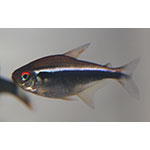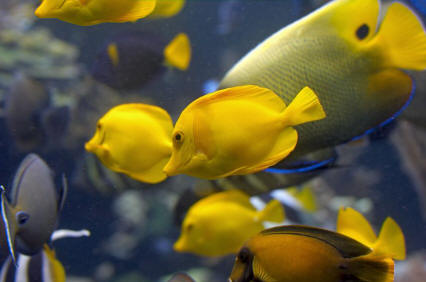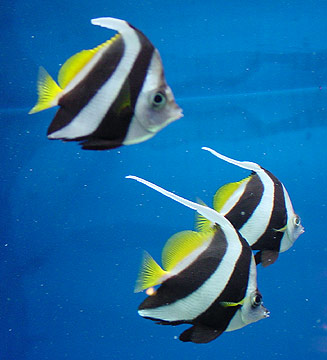Black Neon Tetra

|
Scientific Name: Hyphessobrycon herbertaxelrodi Price: Upon Request Origin: Paraguay, Southern Brazil. Family: Characidae NOT AVAILABLE NOW |
|
Other Names: Gymnocorymsus Ternetzi |
|
Technical Info
Temperature: 22 - 26 ℃
pH: 6.5 - 7
GH: 4 - 8
Max size: 4 cm
Min Tank size: 40 Ltr
Position in Aqua: Middle swimmer
Description
The Black Neon Tetra boasts one of aquaria's most beautiful and unusual coloration. The body of the iridescent Black Neon Tetra is an elegant blend of deep obsidian black paired with a contrasting bright, neon horizontal stripe of yellow-green. A fluorescent orange marking above its eyes completes the telltale markings of the Black Neon Tetra.
Food
Easy to feed. It will readily accept just about anything offered. For the best condition and colours, offer regular meals of small live and frozen foods such as bloodworm, Daphnia and brine shrimp, along with dried flakes and granules.
Breeding
The black neon tetra is an egg scatterer, laying adhesive (sticky) eggs over plants, etc. One female can produce several hundred eggs. The parents will eat their own eggs and babies, so it is normal to remove the parents after spawning. As with many fish, The black neon tetra often spawns in the early morning. Raising the fry can be more difficult because of their small size. The first food will normally be protozoa (infusoria). Very fine fry food can be used, graduating to slightly coarse fry food. At all ages, The black neon tetra benefits from suitably sized live food.
Compatible with
One of the best tetras for the Ďgeneralí community setup. It is lively, peaceful and its colours offer a pleasing contrast to those of many other species. Itís a good tankmate for most commonly available livebearers, danionins, rasboras, other tetras and peaceful bottom dwellers such as Corydoras or smaller Loricariids. It can also be kept with the majority of commonly available gouramis and dwarf cichlids. Obviously, it isnít safe with larger species that may see it as food. In a biotope tank as described above, it can be combined with Hemigrammus or other Hyphessobrycon species, pencil fish, Apistogramma dwarf cichlids and the aforementioned bottom dwellers. Always buy a group of at least 6 of these, preferably 10 or more. It is a shoaling species by nature, and will fare much better when in the company of its own kind.
Note
Mature females are more rounded in the belly than males, and tend to grow a little larger.

